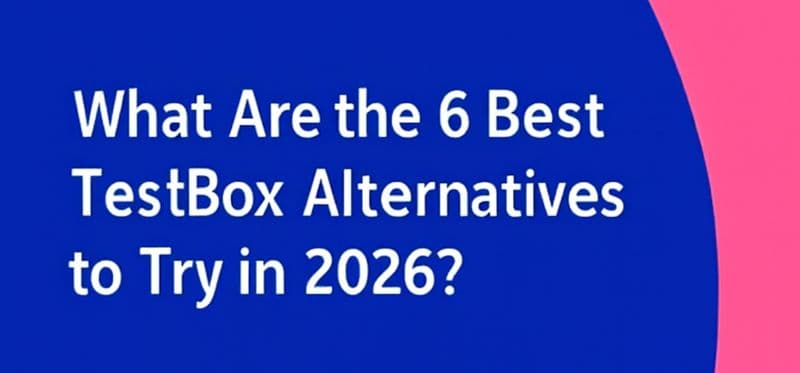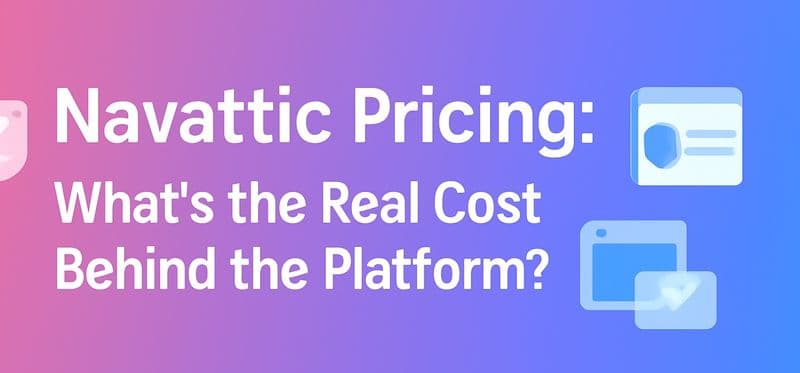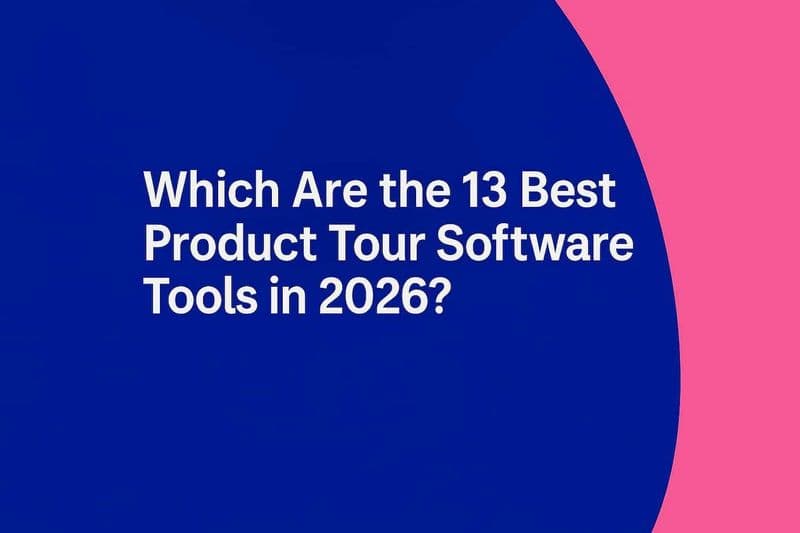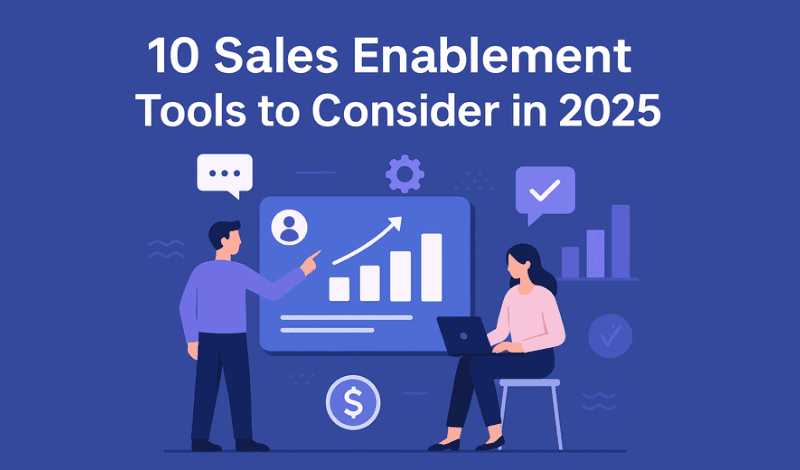
TL;DR
|
Ever walked into a sales call ready to win, only to realize the deck’s outdated, the case study is missing, and the product screenshot still shows last year’s UI? We’ve been there. It’s like showing up to a Formula 1 race in a go-kart. You might have the skills, but without the right tools, you’re already a lap behind.
Selling SaaS in 2025 leaves zero room for that. Buyers have less patience, competitors move faster, and your prospects have already quizzed ChatGPT on your product before you even say hello. Without the right sales enablement tools, you waste time hunting for assets, juggling tabs, and hoping you sound prepared while your deal slips away.
That’s why we put together this list of 10 top sales enablement tools that keep your sales engine running at full speed, ready content, instant access, and zero last-minute scrambles. By the time you hit #10, you’ll know exactly which is the best sales enablement tool that deserves a permanent spot in your stack.
What Are Sales Enablement Tools?
Think of SaaS sales enablement tools as your team’s performance pit crew, always working in the background to make sure your reps have everything they need to win the deal. These aren’t just “nice‑to‑have” sales software apps; they’re a structured mix of software, processes, and data integrations designed to remove friction from the sales cycle.
At a technical level, sales enablement tools typically sit in your revenue tech stack, alongside CRM, marketing automation, and analytics platforms. They integrate with these systems to:
Centralize sales content (decks, case studies, proposals) so reps always have the latest, approved version.
Automate workflows like proposal generation, product demo setup, and lead follow-ups.
Surface contextual guidance inside tools your reps already use (think Slack, Gmail, or the CRM).
Track buyer engagement on assets like who opened what, how long they viewed it, and which sections grabbed attention.
Connect product data to the sales conversation, like showing real‑time usage stats or custom ROI calculators during a pitch.
Here’s something worth bookmarking: Organizations with a formal sales enablement strategy see nearly 50% higher win rates on forecasted deals compared to those without one.
Which SaaS Sales Enablement Tools Are Powering Growth in 2025?
Picking sales enablement tools can feel like shopping for gadgets; you’ll see plenty that look flashy, but only a handful that actually make your life easier. To save you the trial and error, here are the top 10 sales enablement tools that sales teams are really relying on in 2025.
1. SmartCue (G2 rated 4.8/5)
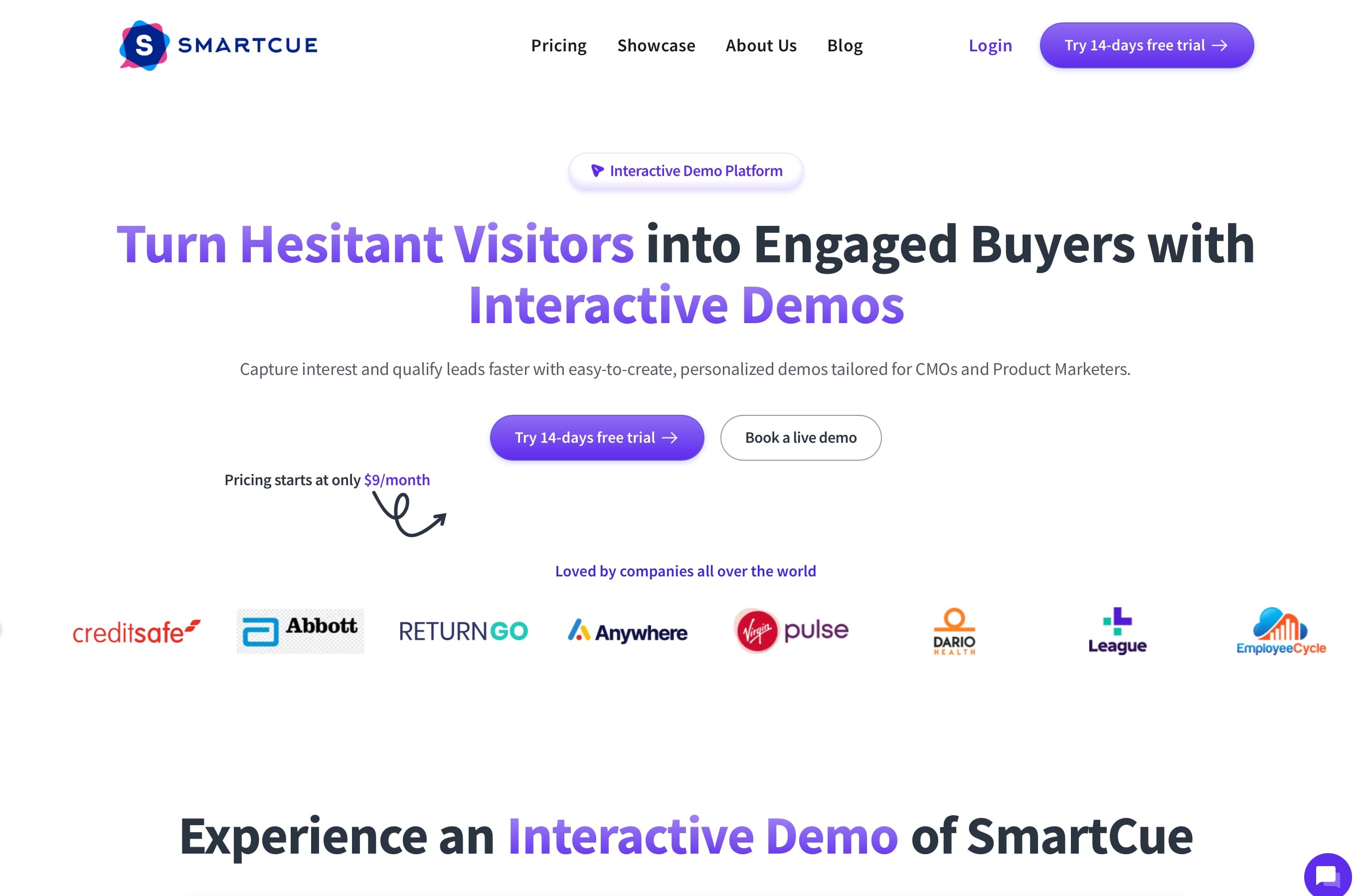
SmartCue turns static product pitches into clickable, self-guided interactive product demos your prospects can explore on their own terms. As our founder Robin Singhvi says, “Every rep should deliver a demo that feels tailored, without reinventing the wheel. SmartCue makes that level of consistency effortless.” With fully branded, no-code walkthroughs that look sharp, load fast, and actually get watched, SmartCue makes personalization scalable without the usual hassle.
Pricing: Free 14-day trial, with paid plans starting at $10/user/month.
How Does SmartCue Help Sales Teams Win?
Spin up demos in minutes – Build polished walkthroughs in about 6 minutes without touching a single line of code.
Make every demo personal – Customize flows for different industries, buyer roles, or use cases with personalized demos.
Drop it anywhere – Embed demos in emails, landing pages, or chat so prospects can click and play instantly.
See what’s working – Track clicks, time spent, and drop-off points to know exactly where to follow up.
Works with your stack – Integrates with HubSpot, Salesforce, Seismic, and more so nothing gets lost in the shuffle.
What Are Users Saying About It?
"Initially, I procured SmartCue to enhance our product demos, aiming to provide a more immersive and interactive experience for our prospects. What I didn't expect was the sheer adaptability of the tool! Beyond its core functionality… SmartCue has truly outperformed my expectations."
Tony G., Sr. Product Marketing Specialist, Enterprise
Start your 14-day free trial today
2. Seismic (G2 rated 4.6/5)
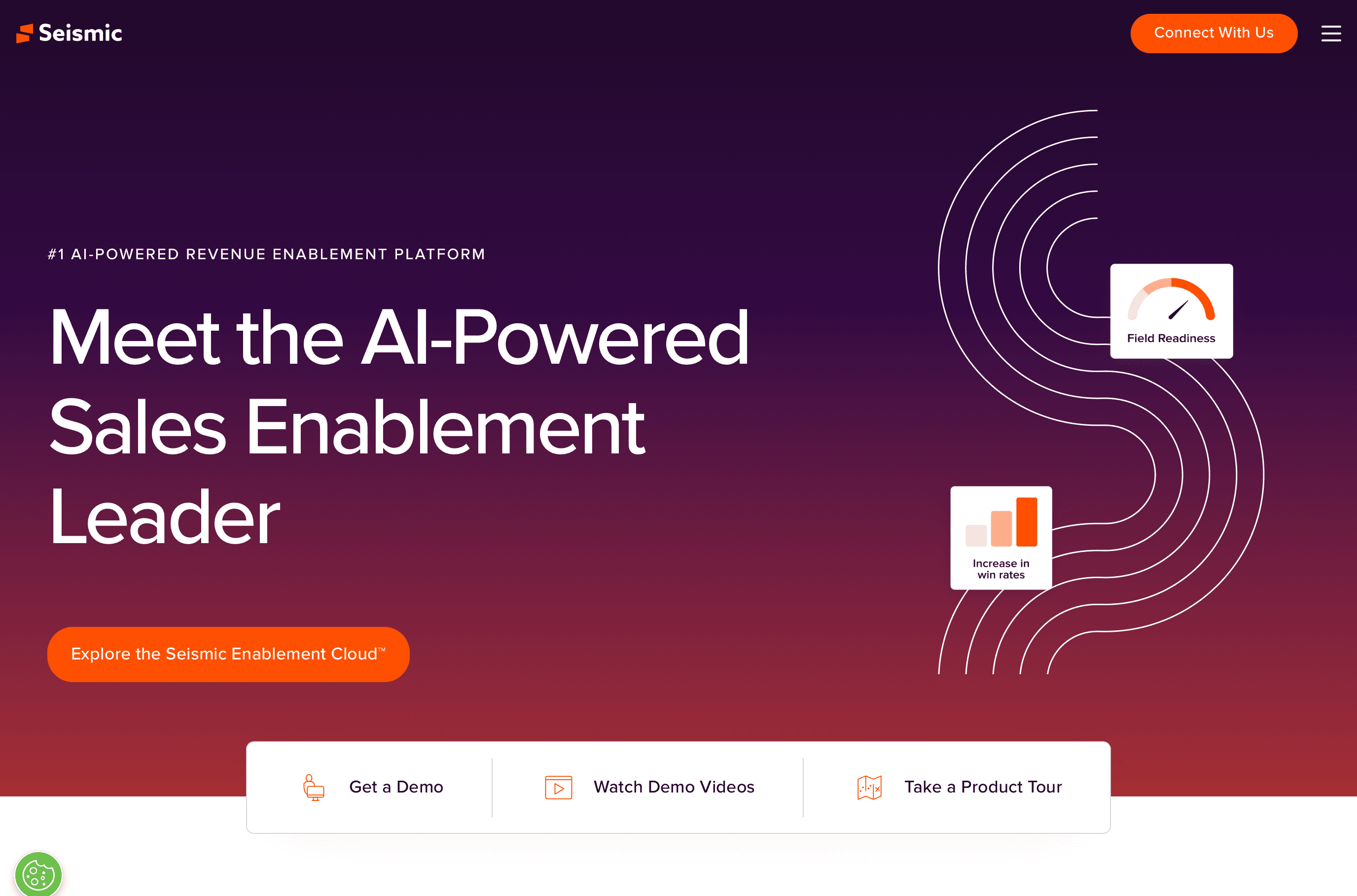
Seismic is a heavyweight in the sales enablement space, built for large teams that need airtight content delivery, onboarding, and training in one place. It’s known for precision, getting the right content to the right seller at the right time.
Pricing: No free tier. Paid plans are custom-priced based on team size and features; enterprise-focused.
How Does Seismic Help Sales Teams Win?
Content you can actually find – AI-powered search surfaces the perfect deck or case study when you need it.
Training and coaching in one spot – Keeps onboarding and ongoing skill-building under the same roof.
Data-driven insights – See which content closes deals and which just clogs your library.
Scales with complex teams – Handles multiple business units and global workflows with ease.
Integrates with your CRM – Works with Salesforce, Dynamics, and more for smooth seller workflows.
What Are Users Saying About It?
“Seismic has allowed us to put all of sales collateral in one place. Making sure that everyone is using the most updated version as well as being able to search off key names. Everyone has access to everything allowing for efficiency. The folder structure is okay, would love for it to juncture more like a website.”
- Missy Z
3. Highspot (G2 rated 4.7/5)
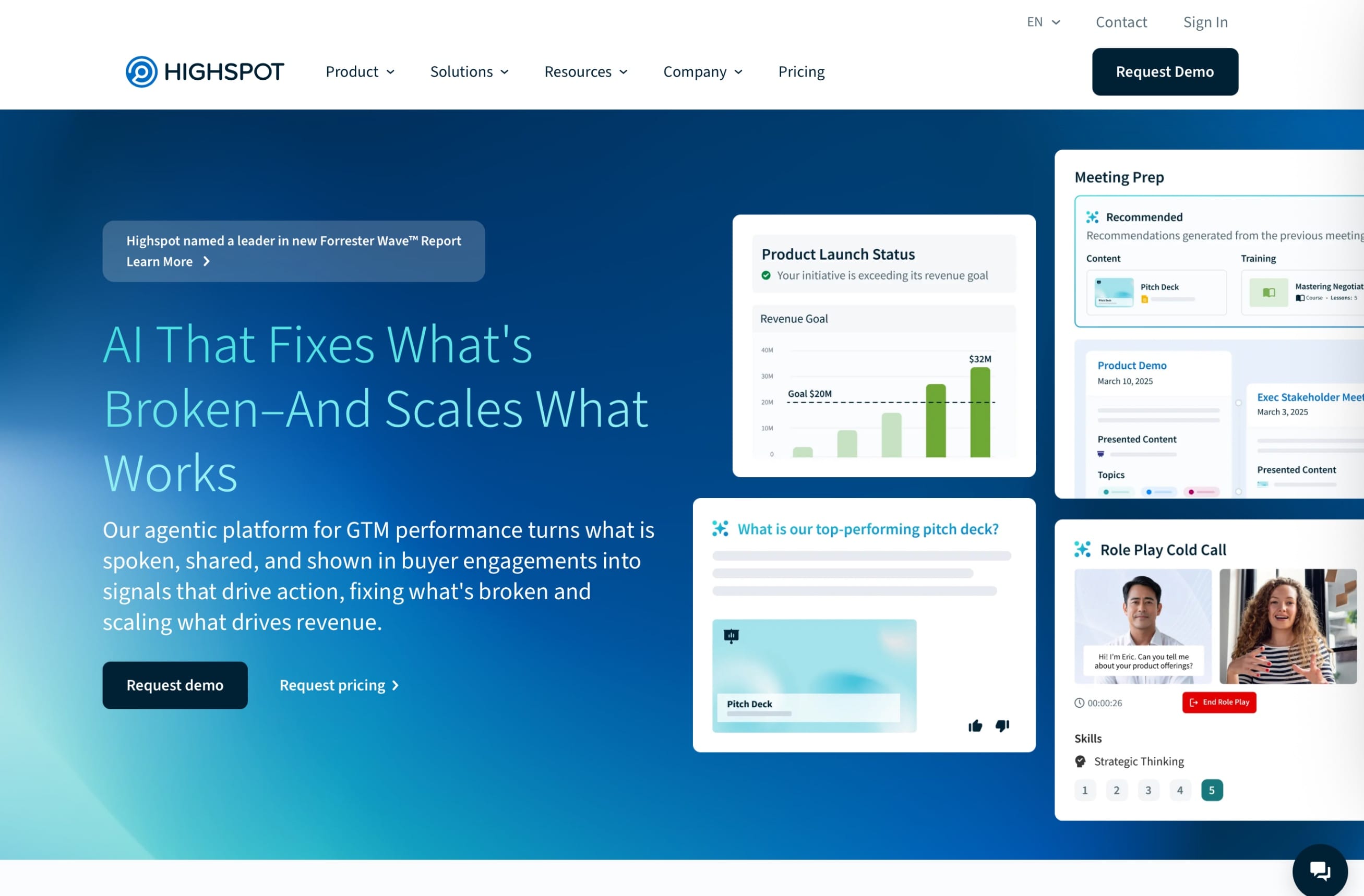
Highspot combines content management, playbooks, and training into a single sales enablement solution platform designed to make sales conversations sharper and more relevant. It’s especially popular for its clean interface and buyer engagement tracking.
Pricing: No free tier. Paid plans typically range from $600–$1,200/user/year, with custom enterprise pricing available.
How Does Highspot Help Sales Teams Win?
Centralized content hub – Store, search, and share sales materials without the “version control” headache.
Smart playbooks – Give reps guided steps tailored to different buyer scenarios.
Engagement analytics – See how prospects interact with shared content, from opens to time-on-page.
Training and coaching – Built-in modules to keep skills sharp.
Seamless integrations – Works well with CRMs and collaboration tools.
What Are Users Saying About It?
“The integration with other software is extremely easy to use..sometimes there is a lot of content and cannot be easy to find what we are looking for but that depends from company to company.”
- Kushi P
4. Showpad (G2 rated 4.6/5)
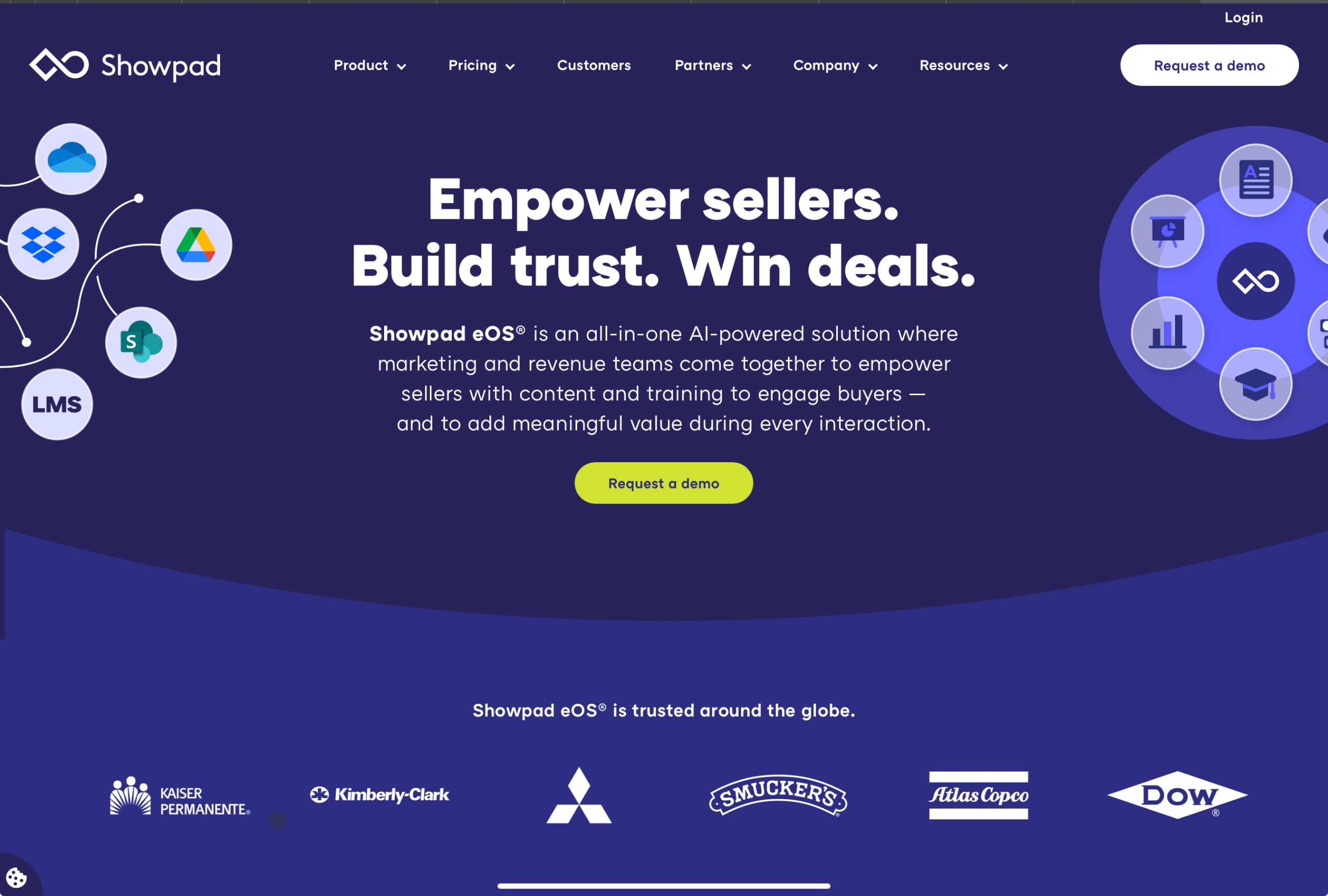
Showpad blends content management with training and coaching so sellers are both well-prepared and well-equipped. It’s a favorite for teams that want all sales materials in one branded, easy-to-share hub.
Pricing: No free tier. Offers Professional, Advanced, and Expert plans with quote-based pricing.
How Does Showpad Help Sales Teams Win?
Unified platform – Combines “Content” for asset management and “Coach” for training.
Customizable sharing – Send tailored content packages to prospects via trackable links.
Search that works – Find assets by title, tags, or even text inside documents.
Role-specific training – Assign learning paths based on team roles or experience.
Detailed reporting – See what’s being used and what’s landing with buyers.
What Are Users Saying About It?
“It is very easy to share information with your customers and follow interest. It is also easy to find your contacts as it keeps emails in memory. It would be easier if there is bcc section to share one mail with all related accounts without seeing each other.”
- Mine K
5. MindTickle (G2 rated 4.7/5)
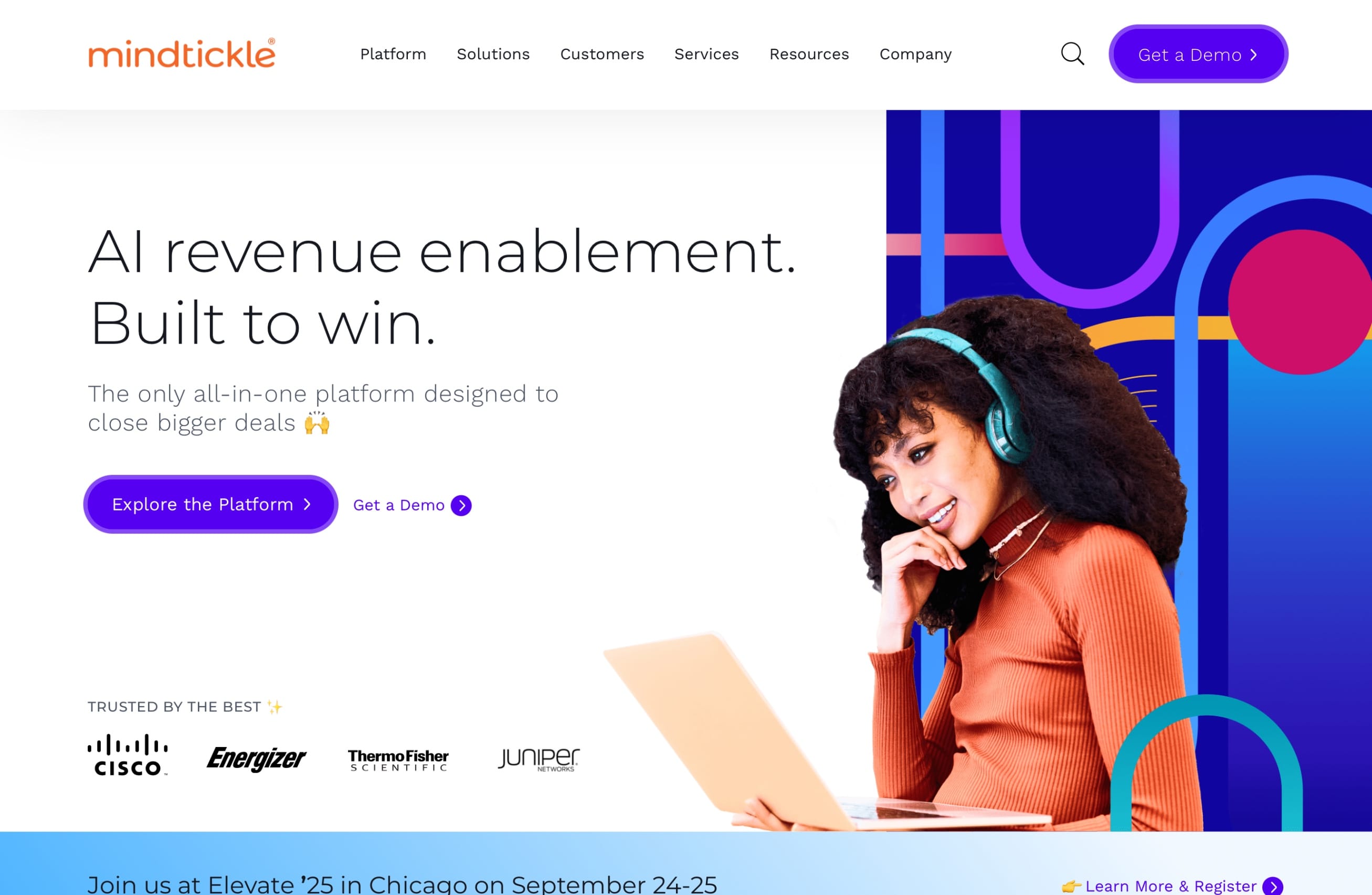
MindTickle focuses on seller readiness, by helping teams onboard faster, sharpen skills, and stay deal-ready through ongoing coaching. It’s especially strong in role-play simulations and personalized feedback.
Pricing: No free tier. Custom pricing only, based on company size and training needs.
How Does MindTickle Help Sales Teams Win?
Structured onboarding – Get new reps productive faster with guided training paths.
Role-play simulations – Practice pitches and get AI or manager feedback.
Readiness metrics – Measure knowledge retention and skill gaps across the team.
Gamified learning – Keep engagement high with challenges and leaderboards.
Content and training in one – Aligns learning materials directly with sales goals.
What Are Users Saying About It?
“It's easy to access, I can pause my learning session if I need to, and if I need to I can go back to a module and rewatch it.”
6. HubSpot Sales Hub (G2 rated 4.4/5)
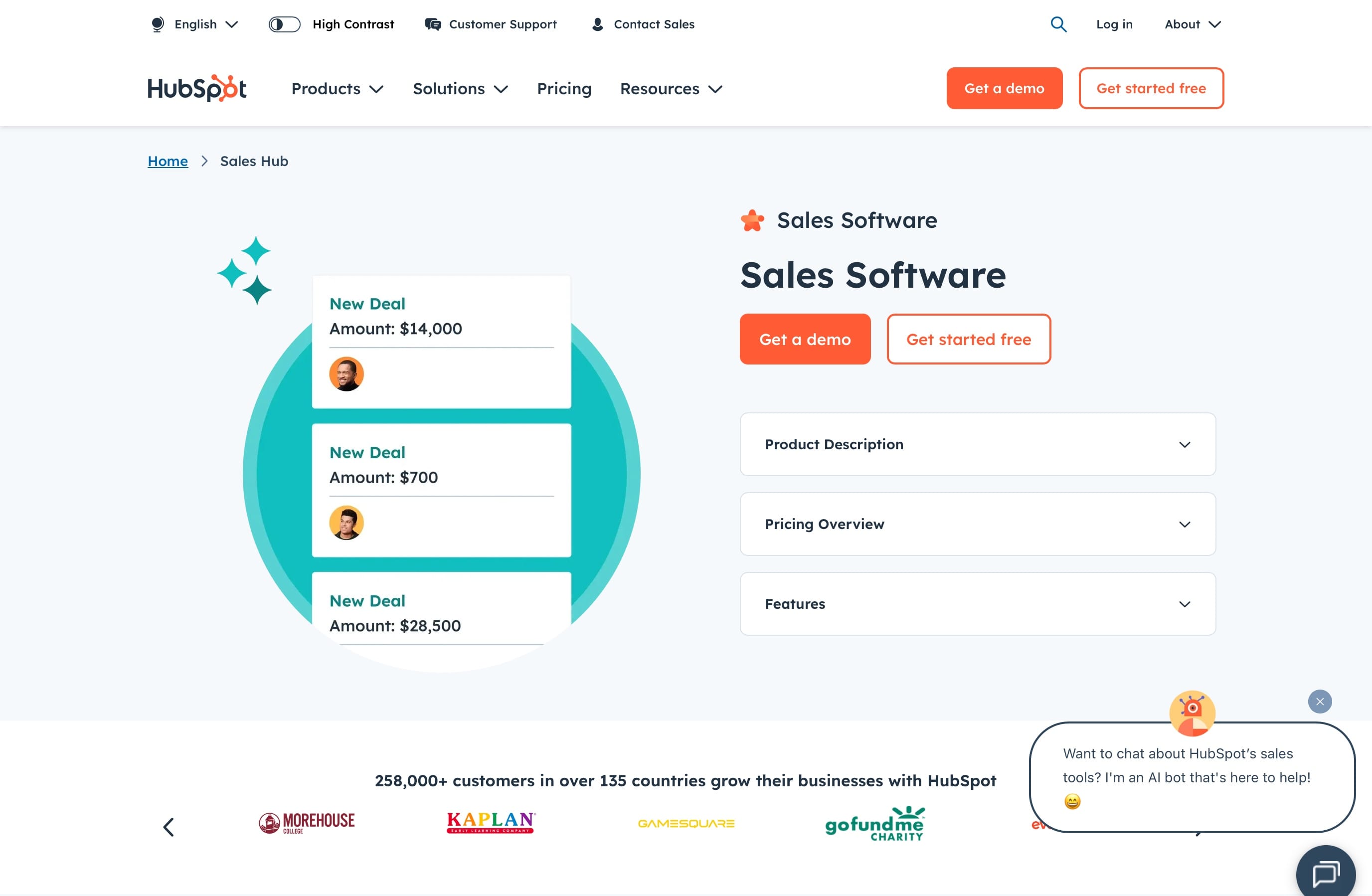
HubSpot Sales Hub blends CRM power with sales enablement tools, giving teams everything from pipeline tracking to automated outreach in one clean, easy-to-use platform. It’s built to cut busywork so reps can focus on closing.
Pricing: Free CRM tier available, with Sales Hub paid plans starting at $20/user/month (Starter) and scaling up to $1,200/month+ for Enterprise.
How Does HubSpot Sales Hub Help Sales Teams Win?
All-in-one CRM – Manage contacts, deals, and pipelines without juggling tools.
Email tracking & templates – See who’s opening, clicking, and engaging with your outreach.
Meeting scheduler – Eliminate back-and-forth with automated calendar booking.
Playbooks – Standardize best practices for calls and follow-ups.
Custom automation – Trigger tasks, emails, and deal updates based on buyer actions.
What Are Users Saying About It?
“It's clean, easy to use, and very feature rich. I'm using it with a client as a consultant and the detailed reporting we get on what is happening with the sales team velocity is unreal. Whenever we've had an issue, customer support has come to the rescue fairly quickly.”
7. Outreach (G2 rated 4.3/5)
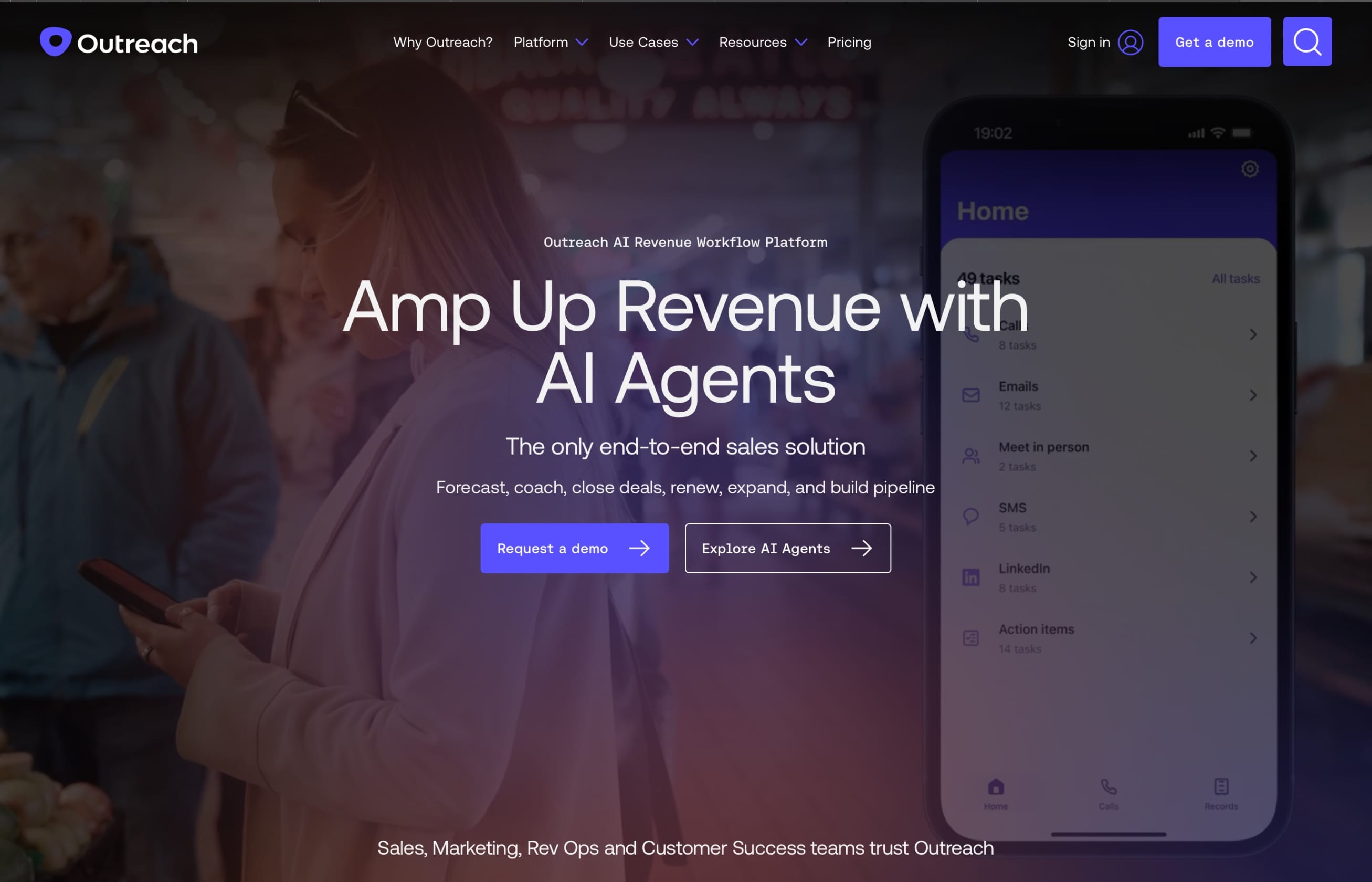
Outreach is built to help sales teams run smarter, more consistent outreach with automated sequences, deal tracking, and AI-assisted workflows. It’s a go-to for keeping follow-ups timely and conversations moving forward.
Pricing: No free tier. Paid plans are custom-priced across packages like Engage, Call, Meet, and Deal; quote required.
How Does Outreach Help Sales Teams Win?
Automated sequences – Schedule multi-step email and call cadences that run on autopilot.
Deal health insights – Spot risks early with AI-driven deal scoring.
Task management – Keep every touchpoint organized and on time.
Engagement tracking – See who’s opening, clicking, or replying in real time.
CRM integration – Syncs smoothly with Salesforce and other major CRMs.
What Are Users Saying About It?
“Great tool for organizing and reaching out to prospects. Love the metrics you can get over time, as well as the elements of AI that have recently been incorporated. Easy and quick integration with Salesforce! The UI could be much better. Such a small window to write emails in that sometimes gets pop up blocked. I also wish the home dashboard was more customizable.“
8. Bigtincan (G2 rated 4.3/5)
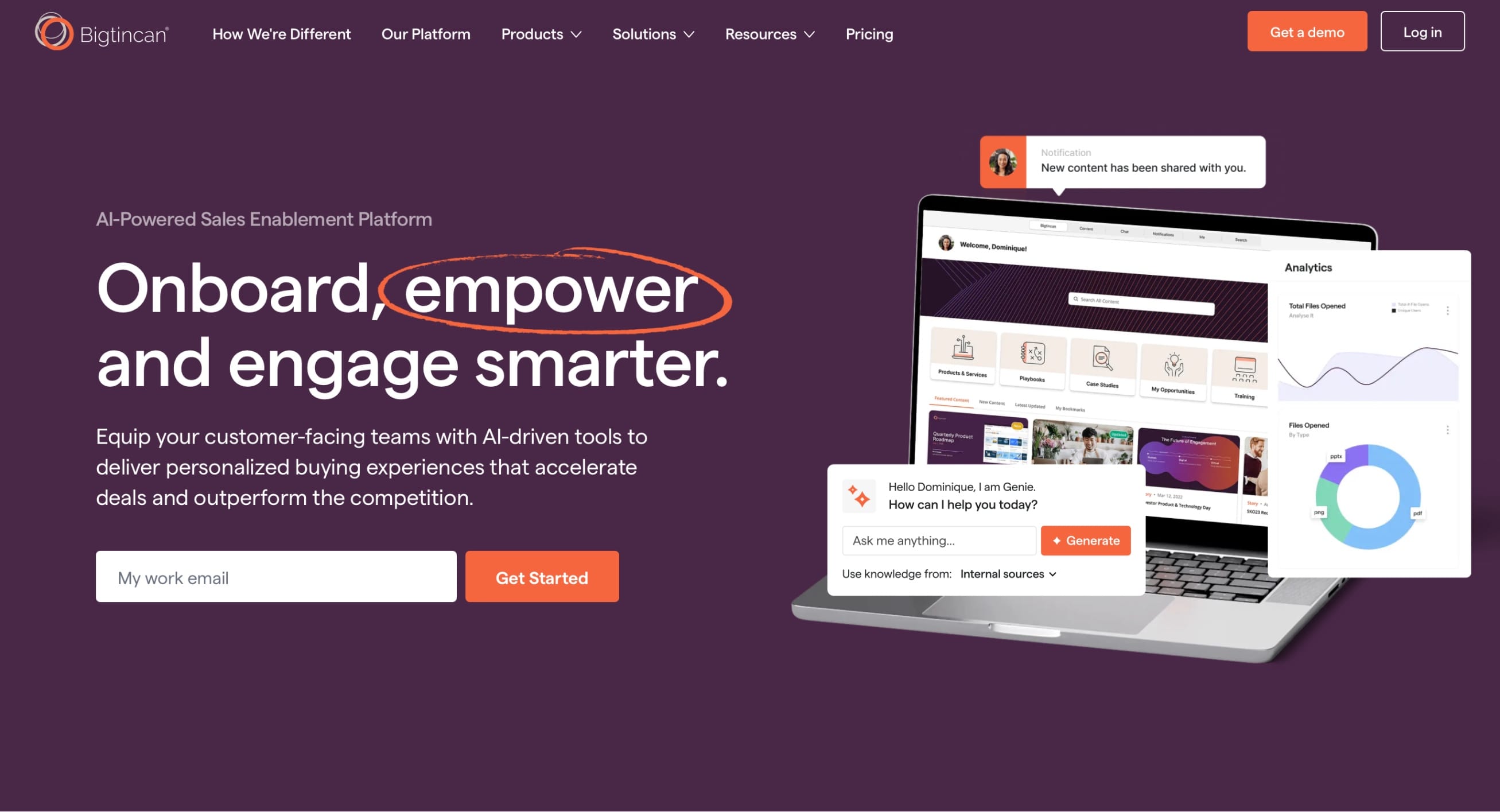
Bigtincan is a mobile-first sales enablement platform that blends content automation, digital sales rooms, and conversation intelligence. It’s designed for reps who need quick, on-the-go access to impactful sales materials.
Pricing: No free tier. Offers Essential and Elite plans with custom pricing based on feature bundles.
How Does Bigtincan Help Sales Teams Win?
AI-powered insights – Track engagement patterns to refine follow-ups and enhance customer interactions.
Digital sales rooms – Give prospects a private, branded space for all shared content.
AI-powered insights – Track engagement patterns to refine follow-ups.
Mobile-friendly access – Access everything from a phone or tablet without losing functionality.
Conversation intelligence – Analyze call recordings to improve pitch effectiveness.
What Are Users Saying About It?
“What I like most about it is the way you can present things so people can interact with them and by doing so make easy the learning process.”
9. Guru (G2 rated 4.7/5)
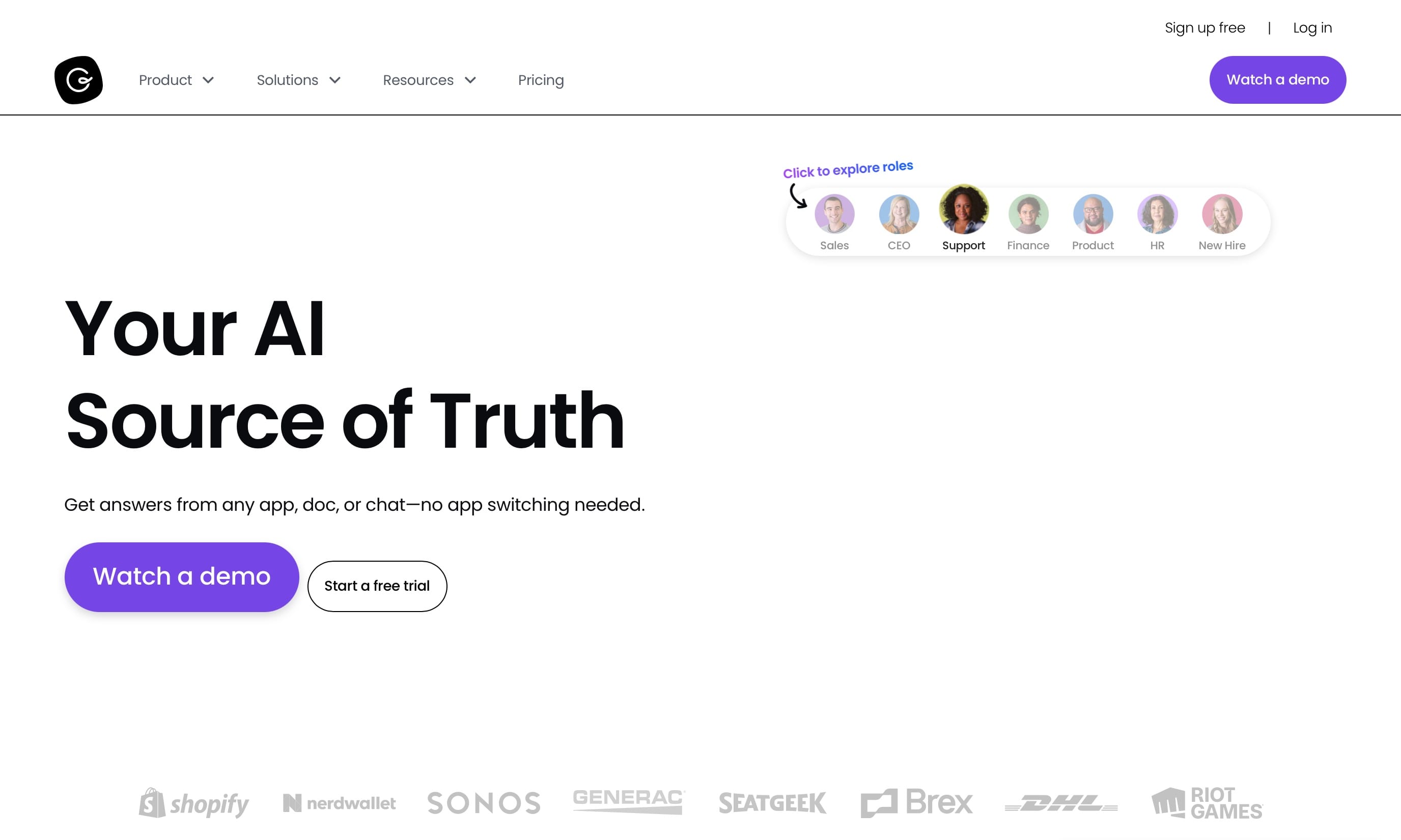
Guru is an AI-powered sales enablement tool and a knowledge management platform that delivers answers to your team right where they work. It turns scattered documentation into a single, searchable source of information.
Pricing: Free 30-day trial, with paid plans starting at $15/user/month. Enterprise plans are custom-priced.
How Does Guru Help Sales Teams Win?
Instant answers – Surface verified info directly in Slack, Teams, or your browser.
Smart search – Find content by keyword, topic, or context in seconds.
Knowledge cards – Create bite-sized, easily shareable resources for quick reference.
Verification workflows – Keep content accurate with scheduled reviews.
Browser extension – Access knowledge without switching tabs.
What Are Users Saying About It?
“What I like best about Guru is how easily it centralizes and surfaces information when I need it. It saves time searching through docs and emails, and the in-browser integration makes accessing relevant knowledge seamless right in my workflow.”
10. Allego (G2 rated 4.6/5)
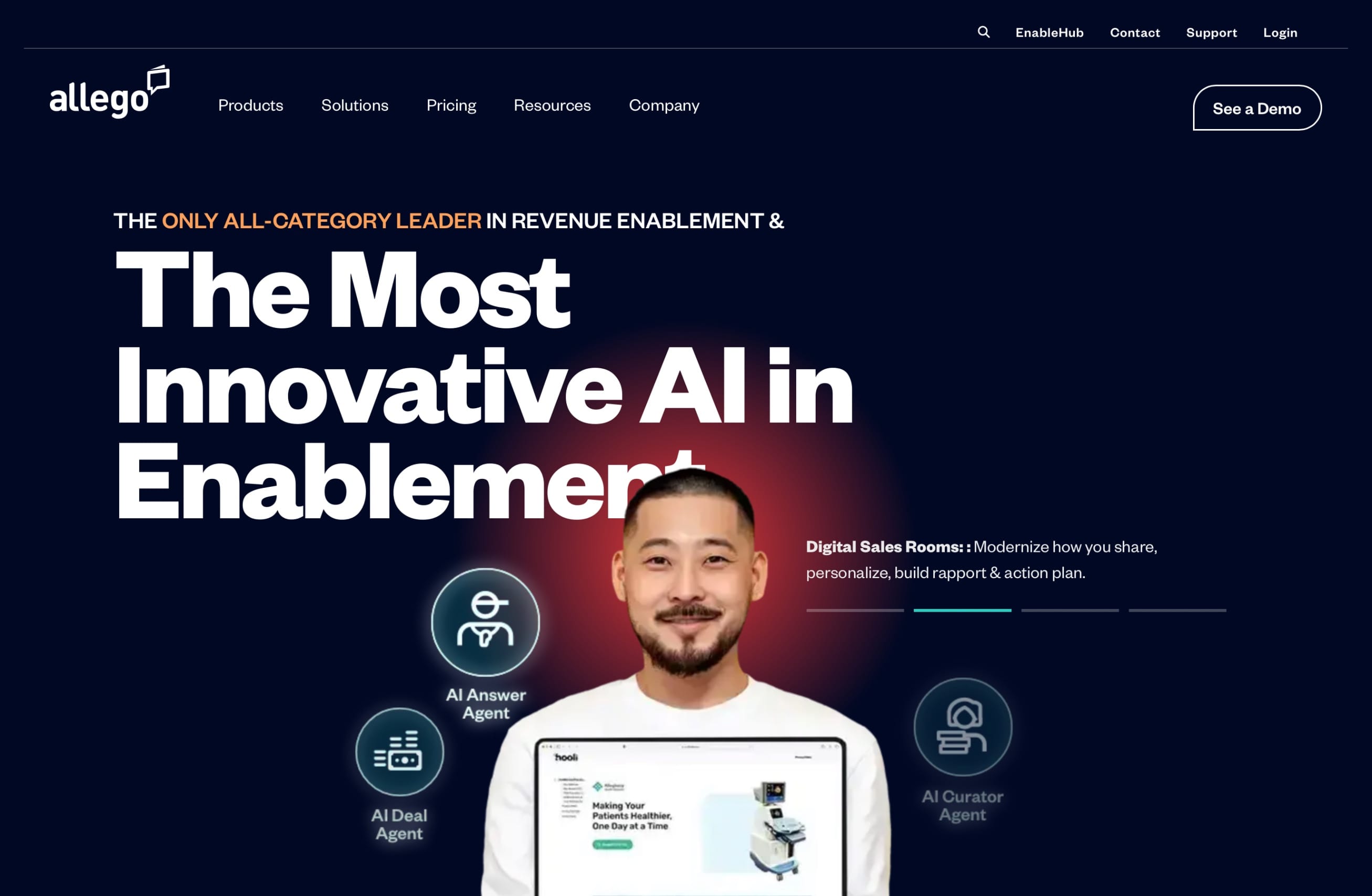
Allego focuses on video-first sales training, content sharing, and collaboration, helping teams learn, practice, and deliver winning pitches faster. It’s built for organizations that want continuous learning tied directly to sales outcomes.
Pricing: No free tier. Plans are quote-based per user/month, with bundles (like Full Suite) offering up to 50% savings.
How Does Allego Help Sales Teams Win?
Video-based learning – Create and share training video content for faster skill building.
Sales content hub – Store, organize, and distribute approved sales materials.
Peer-to-peer collaboration – Share best practices and win stories across the team.
Coaching tools – Provide feedback on rep-recorded pitches and presentations.
Analytics dashboard – Track usage and engagement for both training and content.
What Are Users Saying About It?
“I like the navigability of Allego and the well-designed categorization of subject matter. The frequent notifications to refresh content are a bit distracting. It would be nice to have that happen automatically, with less frequent notification that a manual refresh is required.”
- G2 User
How to Pick the Right Sales Enablement Tool? (5 Must-Haves)
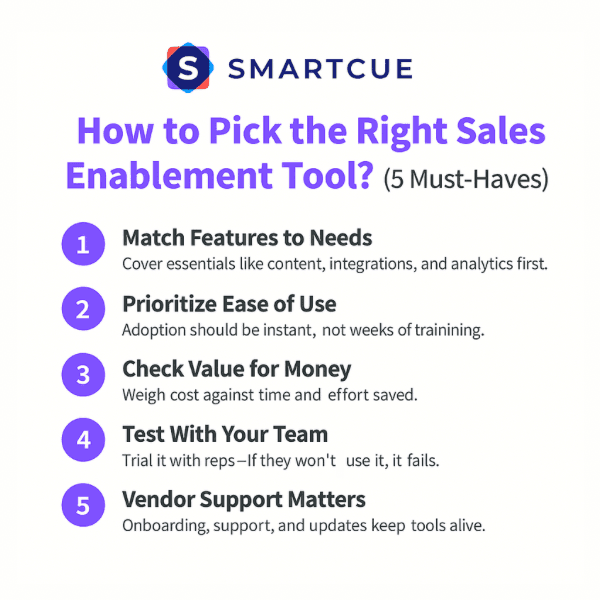
With so many sales enablement tools out there, it’s easy to get lost in the noise. To cut through the hype, here are five things that really matter when choosing the right one for your specific needs and your team.
1. Match Features to Real Needs: Don’t get dazzled by long feature lists. Start with your non-negotiables, like content management, integrations, analytics, or training, and make sure the tool nails those before anything else.
2. Prioritize Ease of Use: If your reps need weeks of training just to send a deck, the tool is already slowing you down. Look for top sales enablement platforms that are intuitive, easy to adopt, and don’t distract your team from actually selling.
3. Check Value for Money: Cheaper isn’t always better, but expensive doesn’t guarantee fit either. Compare what’s included in each package, and weigh it against how much time, effort, or extra software it could save you.
4. Test With Your Sales Team: Your reps are the ones who’ll live in the tool day-to-day. Always run demos or free trials with them, and collect feedback before committing. If they don’t like it, they won’t use it.
5. Don’t Forget Vendor Support: You’re not just buying software, but you’re starting a partnership. Make sure the vendor offers strong onboarding, responsive customer support, and ongoing updates. Even the best sales SaaS tools can flop without the right backing.
Looking to expand your stack beyond sales enablement? Check out our list of 18 Growth Marketing Tools to Accelerate Your Business in 2025.
What Are the 5 Must-Have Features in a Sales Enablement Tool?
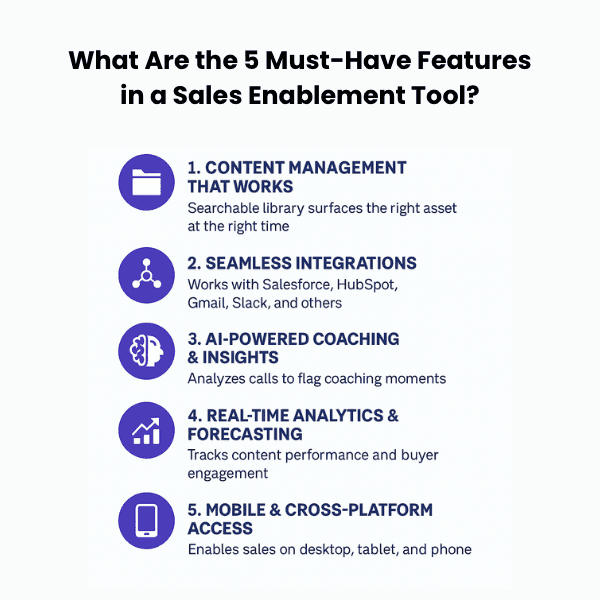
Not every shiny feature is worth paying for, but a few are non-negotiable. If you’re serious about giving your sales team an edge, here are the five must-haves every sales enablement tool should come with.
1. Content Management That Works: Every rep has felt the pain of hunting through folders for the “latest” deck. A solid sales enablement tool should give you a clean, searchable content library that surfaces the right asset at the right time; no more guessing if your case study is out of date.
2. Seamless Integrations: Your sales team already lives in tools like Salesforce, HubSpot, Gmail, or Slack. A good enablement platform plugs into these seamlessly, reducing the time spent on data entry so workflows stay smooth. The last thing you need is another standalone system that slows everyone down.
3. AI-Powered Coaching & Insights: It’s not just about storing content; it’s about making your team sharper. Modern AI sales enablement tools can analyze calls, highlight keywords, and flag coaching opportunities so managers know exactly where to step in. That means better reps, faster.
4. Real-Time Analytics & Forecasting: Gut instinct doesn’t scale. With built-in analytics, you can see which content strategy actually drives deals forward, track buyer engagement in real time, and leverage valuable insights to forecast outcomes with confidence. Data-backed selling beats guesswork every time.
5. Mobile & Cross-Platform Access: Sales doesn’t just happen at a desk. Whether it’s a quick deck review before a meeting or sharing content on the go, an advanced sales enablement tool should provide easy access and work flawlessly across desktop, tablet, and mobile so reps are always deal-ready.
Want to put these features to work for your team? Try SmartCue free for 14 days or book a live demo to see how effortless interactive selling can really be.
So, What’s The Real Goal of Sales Enablement?
At the end of the day, the best sales enablement software isn’t about adding more tools; it’s about helping sales reps spend less time digging through Google Drive or email addresses and more time moving prospects through the sales funnel. The right platform becomes the bridge between content creation, customer information, and meaningful conversations that actually close deals.
For sales leaders and sales managers, these platforms also double as a guide for shaping sales strategy, strengthening relationship management, and improving customer experience. With features like sales intelligence, sales analytics, and content recommendations, teams can understand customer behavior instead of just guessing at it.
And while there are plenty of types of B2B sales enablement tools out there, from learning management systems to mutual action plans, what really matters is finding the SaaS enablement tool that fits your team and drives true customer success. Get that right, and you’ll see the difference not just in your pipeline management, but in your overall sales performance.
Frequently Asked Questions
What is sales enablement and how can it help my business?
Sales enablement is about giving your sales reps the right content, tools, and data at the right time. Done well, it streamlines the sales process, shortens the sales cycle, and helps your team close deals more consistently.
How is sales enablement different from marketing automation?
Marketing automation nurtures leads before they hit sales, while sales enablement supports reps once they’re working those leads. Think of it as the handoff: marketing warms them up, SaaS sales enablement B2B equips reps to convert them into customers.
What free online tools can help my remote sales team?
Free sales enablement tools like HubSpot CRM, Google Drive, Loom, and Trello can keep remote sales teams aligned. They handle basics like contact management, file sharing, video walkthroughs, and task tracking without a steep learning curve or cost.
What's the best sales enablement platform?
The “best” tool really depends on your team’s needs. For SaaS teams that value speed, interactivity, and ease of use, SmartCue stands out. It simplifies demo creation, integrates smoothly with existing workflows, and helps reps close deals without added complexity.
Can you compare the pricing and value of the leading sales enablement tools available in 2025?
Pricing varies widely; free or low-cost CRMs on one end, enterprise tools like Seismic or Highspot on the other. Value comes down to ROI: how much time it saves reps, how well it integrates, and whether it scales with your pipeline.
What are the main differences between revenue enablement platforms and traditional sales enablement tools?
Traditional sales enablement tools focus on helping reps close deals. Revenue enablement platforms widen the scope, aligning sales, marketing, and customer success teams around shared customer data, analytics, and processes to drive revenue growth across the entire customer journey.
